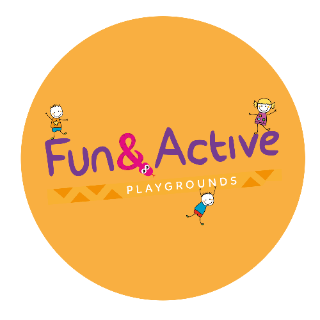What is Thermoplastic?
If you’re unsure of the best material to use, let us tell you more about thermoplastic, what it is, what its advantages are, and why it’s such a popular material in many different industries.
What is thermoplastic?
Put simply, thermoplastic is a plastic polymer material that becomes soft when heated. It’s made from polymers (large molecules) and these polymers are made up of monomers (smaller particles) that are bonded together in linear chains. It is the length of these chains that determine the properties of thermoplastic. The longer the chain, the heavier the molecular weight, and the heavier the molecular weight, the more durable the material.
When heat is applied, thermoplastic becomes soft and melts which means it can be moulded and shaped for different needs, solidifying when cooled. This process can be repeated many times and the thermoplastic will always retain its molecular structure. This is what makes thermoplastic so versatile and even better – recyclable!
What are the examples of thermoplastic?
There are lots of different types of thermoplastics that are all used in different industries. The following list details some of the different types as well as some examples of what each thermoplastic is used for:
- Acrylic – commonly used as an alternative to glass and for items such as LCD screens, furniture, vehicle headlights, paint, and lenses.
- Polythene or Polyethylene (PE) – LDPE is commonly used in packaging, plastic bags, plastic bottles, and HDPE is used for items such as toys and outdoor play equipment.
- Polyvinyl chloride (PVC) – used for industrial, technical, and every day purposes including cable insulation, packaging, pipes, roofing, flooring, cladding, and medical equipment.
- Polypropylene (PP) – commonly used for food containers, packaging, and plastic parts for machinery and equipment.
- Polycarbonate (PC) – used in items such as eyewear, medical devices, PPE, greenhouses, CDs and DVDs and other electrical components.
- Polystyrene (PS) – used in packaging, toys, trays, containers, and foam cups.
- Polytetrafluoroethylene (PTFE, Teflon) – commonly used for waterproof clothing, non-stick pots and pans, electrical equipment, and self-cleaning ovens.
- Styrofoam – used for building insulation, packaging, and disposable plates and trays.
- Polyamide (Nylon) – commonly used in clothing, car tires, rope, fishnets, and tents.
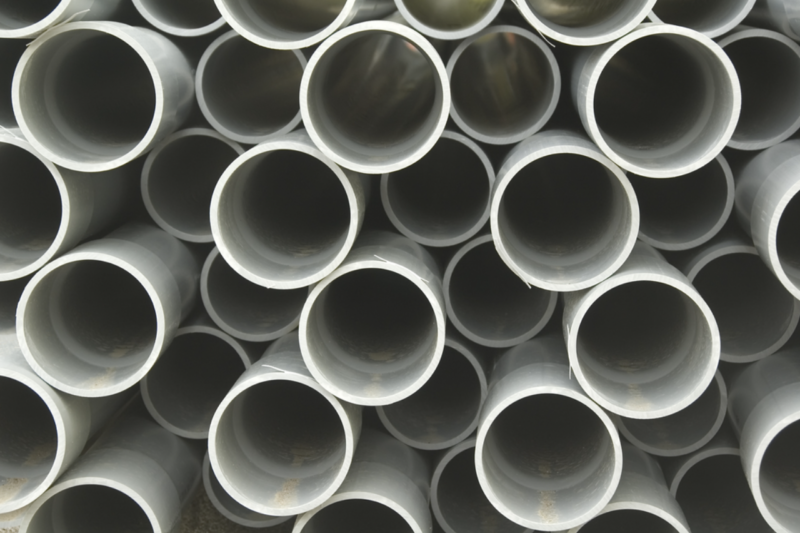
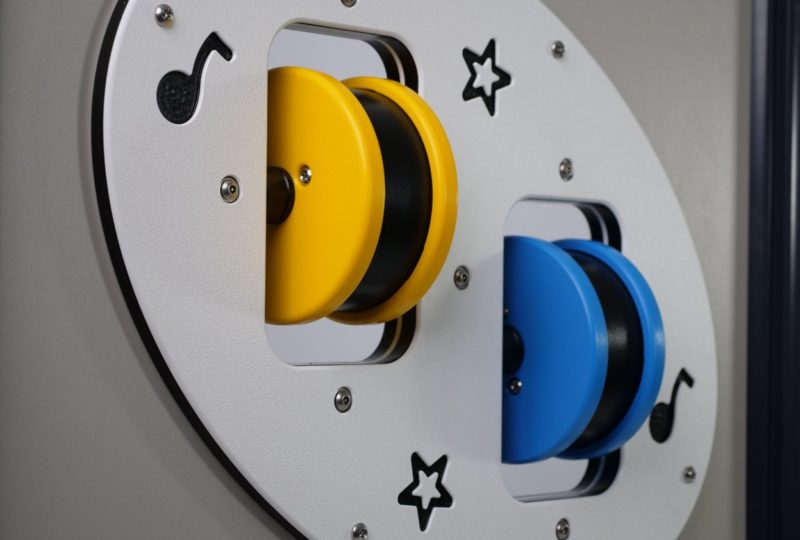
What’s the difference between thermoplastic and thermosetting?
The main difference between thermoplastics and thermosets is that thermoplastics have a lower melting point than thermosets. Thermosets become stronger when heated and after its formation, it can withstand corrosion as well as high temperatures, and so cannot be reheated and remoulded once it’s initially cooled. On the other hand, thermoplastics become soft when exposed to excess heat, and can be reheated and remoulded as many times as needed without losing its molecular structure. This also means thermoplastics can be recycled and reused.
What are the properties of thermoplastic and thermosets?
| Thermoplastics | Thermosets |
| Linear molecular structure, weak bonds. | Cross-linked network, strong bonds. |
| Melting point is lower than the degradation temperature | Melting point is higher than the degradation temperature |
| Highly resistant to chemicals | Highly resistant to heat and chemicals |
| Recyclable | Non-recyclable |
| Durable, flexible, and elastic | Strong, rigid, and brittle |
| Measure: Molecular Weight (g/mol) | Measure: Crosslink Density (mol/cm3) |
Looking at different properties is one way to tell the difference between thermoplastics and thermosets. Thermoplastics have a linear molecular structure with weak bonds, whereas thermosets have a cross-linking network with strong bonds. Because of this, thermoplastics have a lower melting point than thermosets. The process of melting thermoplastic is endothermic which absorbs heat, whereas the process of cross-linking (curing) thermosets is exothermic which releases heat. Thermoplastics are highly resistant to chemicals, whereas thermosets can withstand both heat and chemicals. Consequently, thermosets are non-recyclable, but thermoplastics can be melted down, remoulded, and reused.
Thermoplastics are elastic and flexible, making them highly resistant to impact – ten times more so than thermosets that are strong, yet rigid and brittle.
The size of thermoplastic is expressed by molecular weight (g/mol), unlike thermosets’ size which is expressed by crosslink density (a measure of cross-linked points per unit volume normally expressed in mol/cm3).
What are the advantages of thermoplastic?
There are many advantages to using thermoplastic, the biggest being its versatility and how it can be used for many purposes in different industries. These advantages below are what makes thermoplastics so diverse:
- Can be remoulded and remodelled
- Easily recyclable
- High resistance to chemicals
- Durable
- Flexible
- High resistance to impact
- Slip resistant
- Resistant to corrosion
- Electrical insulators
- Adhesive to metal
- Quality aesthetic appearance
As with any material, advantages also come with disadvantages but in the case of thermoplastic, these are outnumbered. Although a relatively low melting point is an advantage, this can also be a disadvantage as low-quality material may soften when exposed to heat. Similarly, when some types of thermoplastics are exposed to cold temperatures, it can fracture. In some cases, thermoplastic can also be more expensive than alternative thermosets.
Is thermoplastic good for the environment?
Neither thermoplastic nor thermosets truly biodegrade after they are released into the environment, but if they do, it is only under very specific circumstances.
Some thermoplastics are environmentally friendly as they are easily recyclable. Thermoplastic can be reheated and reshaped, without losing its strength, and therefore can be reused again and again, making for a sustainable material and less plastic waste.
Thermoplastic manufacturing can result in lower energy consumption too since it often requires shorter production cycles. Thermoplastics are a lighter alternative to other materials which means it uses less energy to carry or transport. This in turn improves fuel efficiency in vehicles and aircrafts. Plus, household items such as thermoplastic food containers can help reduce the usage of other single-use plastic containers and plastic film.
The bigger threat on the environment is single-use plastic and the waste it generates. From this perspective, using thermoplastics is a great solution. Thermoplastics, such as the material we use to make playground markings, are far from single-use. Their durability means they have a long lifespan of up to ten years, resisting lots of footfall and road traffic.
On the other hand, there needs to be more encouragement for recycling thermoplastic as it can be expensive. Plus, the more times thermoplastic is recycled, and depending on what it’s used for each time, other chemicals can be added which can sometimes make the thermoplastic composites less recyclable.
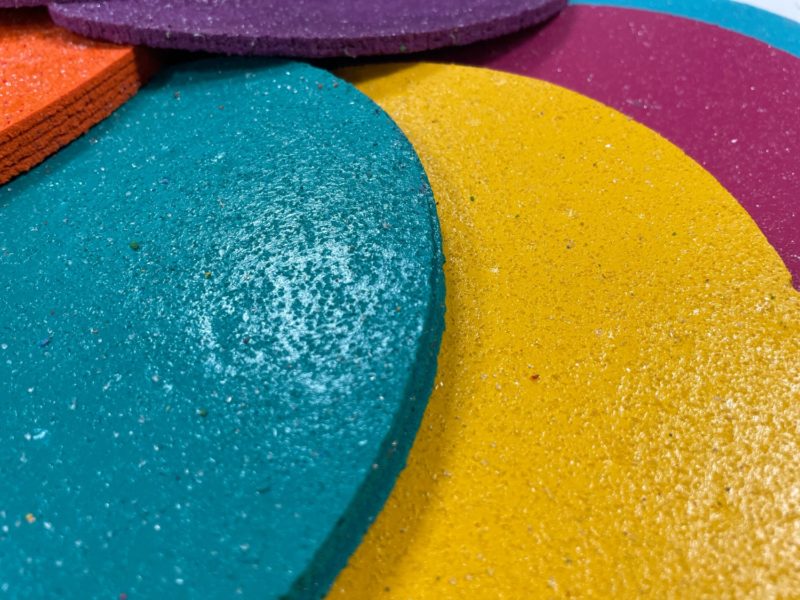
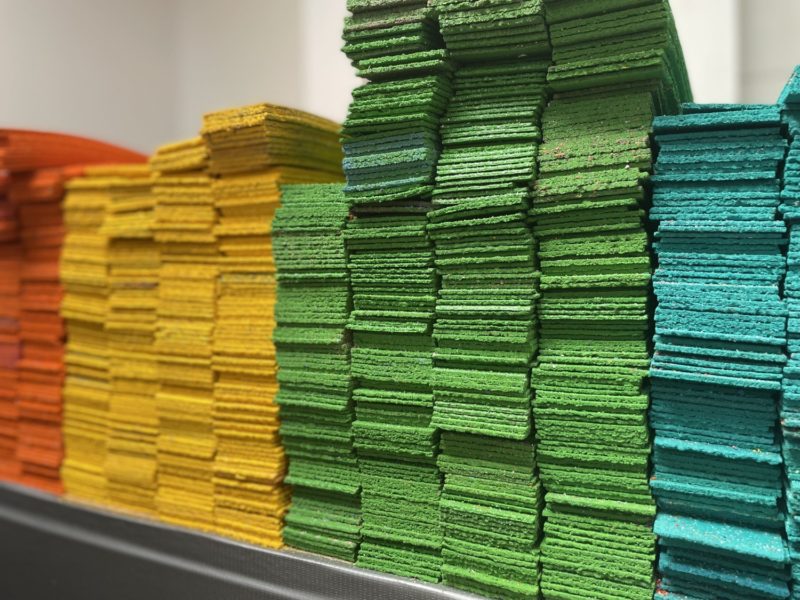
What is thermoplastic used for?
Thermoplastic is used to make many items in several different industries including medical, industrial, mechanical, and electrical, from household objects such as reusable food containers and clothing, to industrial pieces such as cable insulation and packaging. It can also be used as an alternative to glass.
What is a thermoplastic polymer?
A thermoplastic polymer is a type of plastic polymer material that becomes soft when heated. When the thermoplastic polymer cools, it hardens, all the while maintaining its molecular structure. This process can be repeated many times.
What objects are made of thermoplastic?
Different types of thermoplastic are used to make different objects such as food packaging, waterproof clothing, non-stick pots and pans, eye-wear, CDs and DVDs, cable insulation, water bottles, LCD screens, paint, furniture, outdoor play equipment, toys, roofing, cladding, greenhouses, and medical devices.
What are the properties of thermoplastic?
Properties of thermoplastic include a relatively low melting point, resistance to chemicals, mouldable, flexible, durable, recyclable, strong, environmentally friendly, and an ability to maintain its molecular structure after being heated and reshaped.
What are the advantages of thermoplastic?
Some of the many advantages of thermoplastic material include versatility, flexibility, durability and strength, resistance to chemicals and corrosion, resistance to impact, easily recyclable, easily reshaped, adhesive to metal, good electrical insulation, and an aesthetic appearance.
How can thermoplastics and thermosets be recycled?
Thermoplastics can be recycled by melting the material and reshaping or remoulding it for a new purpose. This is thanks to their linear molecular structure, linked together with weak bonds. Thermosets on the other hand, cannot be recycled because of their crosslink structure and resistance to heat.
What is the main difference between thermoplastic and thermosetting plastic?
The main difference between thermoplastic and thermoset plastic is that thermosets strengthen when heated, and, after curing, are resistant to heat so the process cannot be repeated. Unlike thermoplastic which once cured, can be heated, softened, and remoulded many times.
Why are thermoplastics better for the environment?
Thermoplastics are better for the environment because they help to reduce the amount of single-use plastic and plastic waste. Thermoplastics can be recycled and reformed for different purposes. It’s able to maintain its molecular structure each time which makes for a long lifespan and means it can be reused again and again.
